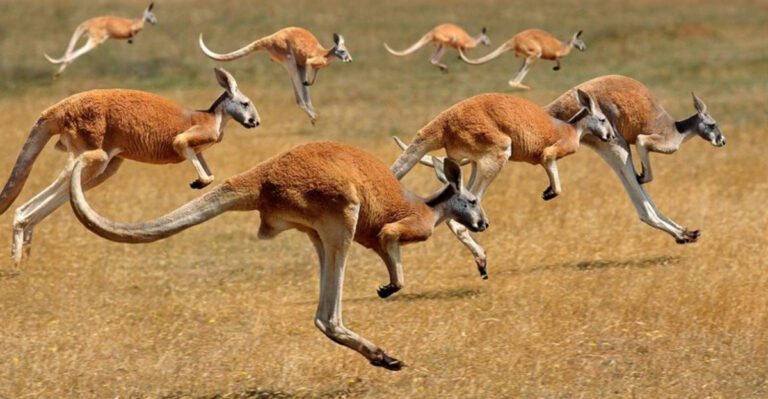14 Wild Animals That Secretly Call The Ozarks Home

Hidden within the rolling hills and pristine waterways of the Ozarks lies a secret world of fascinating wildlife.
Many visitors to this beautiful region never realize the diverse creatures watching them from the shadows of ancient oaks or the depths of crystal-clear streams.
From elusive predators to peculiar amphibians, these 14 wild animals have made the Ozarks their home while often staying just out of sight.
1. Eastern Wild Turkey

Strutting through the dense Ozark woodlands, these magnificent birds are far more clever than their domestic cousins. They communicate through a complex language of gobbles, clucks, and purrs.
Eastern Wild Turkeys feast on nuts, berries, insects, and small reptiles while playing a crucial role in seed dispersal throughout the forest ecosystem. During spring, males perform elaborate courtship displays with fanned tails and vibrant wattles.
2. Ozark Hellbender

Looking like something from prehistoric times, these giant salamanders can reach two feet long! Their wrinkled skin and flat bodies help them navigate swift currents while hunting for crayfish.
Found exclusively in cold, clear Ozark streams, these critically endangered amphibians breathe entirely through their skin. Hellbenders serve as living barometers for water quality—their declining numbers signal environmental distress in the waterways they’ve inhabited for millions of years.
3. American Black Bear

Shy and surprisingly nimble, black bears roam the remote corners of the Ozarks. Despite their name, these bears can be brown, cinnamon, or even blonde in color. Masters of adaptation, they consume everything from berries and nuts to insects and occasionally small mammals.
Black bears have remarkable memories, returning to productive food sources year after year. Their population has slowly rebounded after nearly disappearing from the region in the early 1900s.
4. Red Fox

Flame-colored and fleet-footed, red foxes bring flashes of rusty orange to the Ozark landscape. Their bushy tails serve as balancing tools for precise jumps and warm blankets during cold nights. These intelligent hunters use remarkable hearing to detect mice moving beneath snow or leaves.
Red foxes maintain extensive territories throughout the region’s diverse habitats, from remote forests to suburban edges, helping control rodent populations while raising their playful kits in underground dens.
5. Eastern Coyote
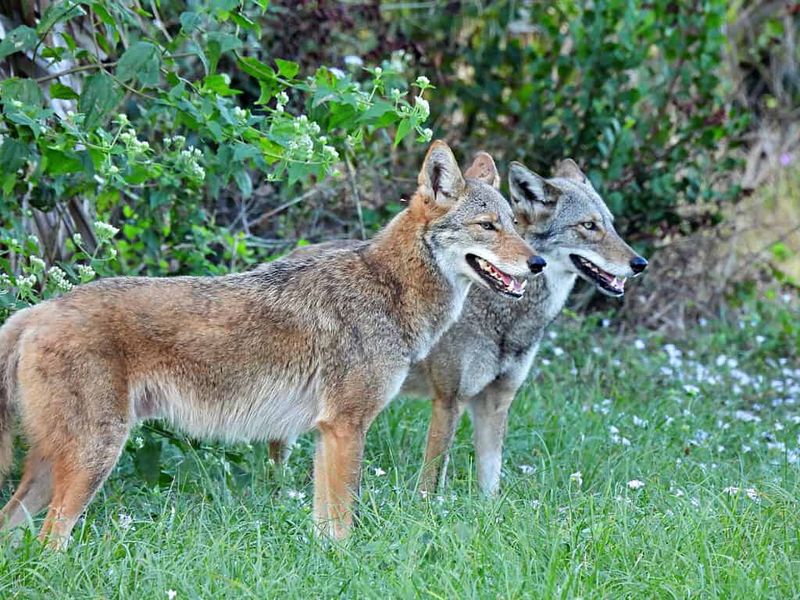
Moonlight serenaders of the Ozarks, these adaptable canines have expanded their territory despite human encroachment. Their haunting howls carry for miles across valleys and ridges. Larger than western coyotes due to wolf DNA, eastern coyotes thrive by consuming everything from berries to deer.
These resourceful predators form strong family bonds while hunting in coordinated groups. Their intelligence and flexibility have allowed them to flourish where many other predators have vanished.
6. Bobcat
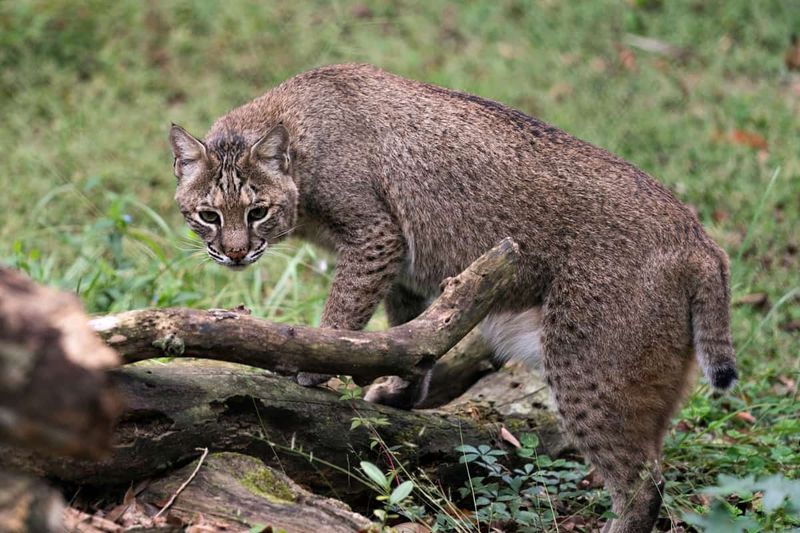
Ghost-like and rarely glimpsed, bobcats patrol their territories with silent precision. Their tufted ears and spotted coats blend perfectly with dappled forest light. Masters of ambush hunting, these medium-sized felines can take down prey much larger than themselves.
Bobcats leave little evidence of their presence beyond occasional tracks in mud or snow. Despite their secretive nature, healthy populations exist throughout the Ozarks’ rugged terrain.
7. Great Horned Owl

Fierce yellow eyes pierce the darkness as these winged hunters rule the night skies. Their distinctive ear tufts aren’t actually ears but feather arrangements that help break up their silhouette.
Great Horned Owls possess specialized feathers allowing nearly silent flight as they swoop down on unsuspecting prey. Their powerful talons can exert 300 pounds of pressure per square inch! These adaptable birds occupy diverse Ozark habitats, from deep forests to rocky bluffs.
8. Timber Rattlesnake
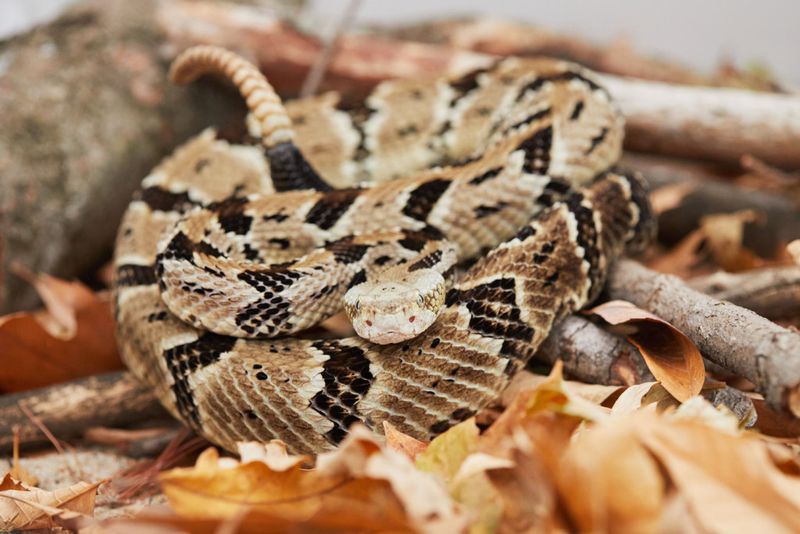
Armed with heat-sensing pits and infamous rattles, these venomous reptiles prefer remote, rocky areas of the Ozarks. Their distinctive chevron patterns provide perfect camouflage among fallen leaves.
Contrary to their fearsome reputation, timber rattlesnakes are typically non-aggressive, using their rattles as warning systems to avoid confrontation.
These important predators help control rodent populations that could otherwise spread disease. Unfortunately, habitat loss and persecution have reduced their numbers significantly.
9. River Otter
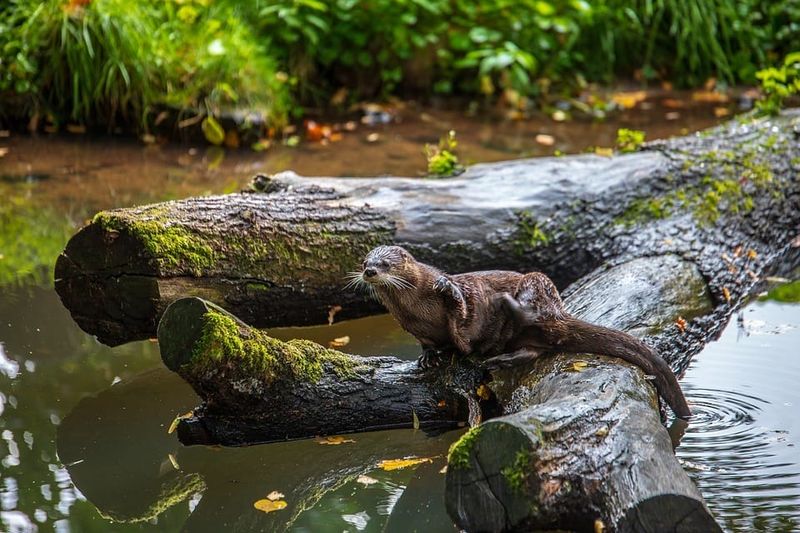
Acrobats of the waterways, river otters tumble and slide along Ozark riverbanks with apparent joy. Their dense fur and powerful tails make them exceptional swimmers capable of remaining submerged for minutes.
These charismatic mammals were nearly eliminated from Missouri by the 1930s due to unregulated trapping.
Thanks to successful reintroduction efforts beginning in 1982, otters once again chase fish through the region’s clear waters. Their playful antics and social behavior make rare sightings especially memorable.
10. White-Tailed Deer
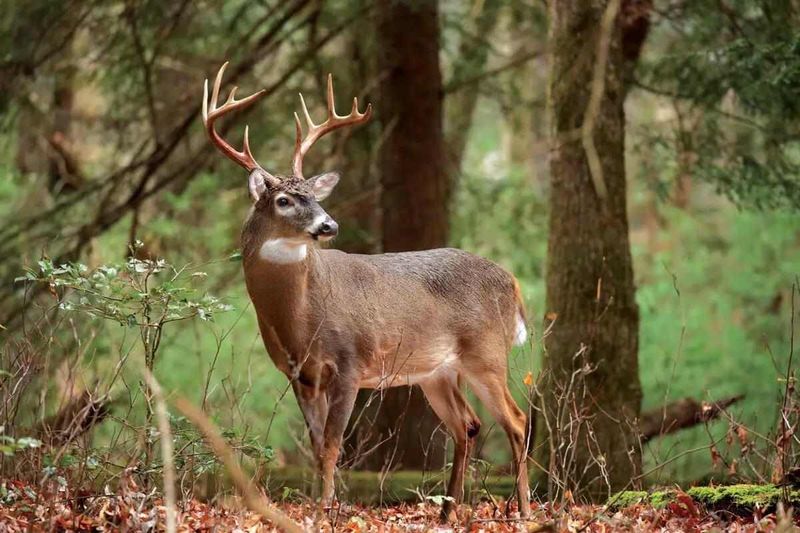
Graceful browsers with incredible leaping abilities, white-tailed deer have adapted remarkably well to human-altered landscapes. Their large ears constantly rotate like radar dishes, detecting potential dangers.
Fawns enter the world wearing spotted camouflage that helps them blend perfectly with dappled sunlight. These resilient herbivores play crucial ecological roles as seed dispersers and vegetation managers.
Their populations have rebounded dramatically from historical lows, making them the most commonly seen large mammal in the Ozarks.
11. Wild Boar
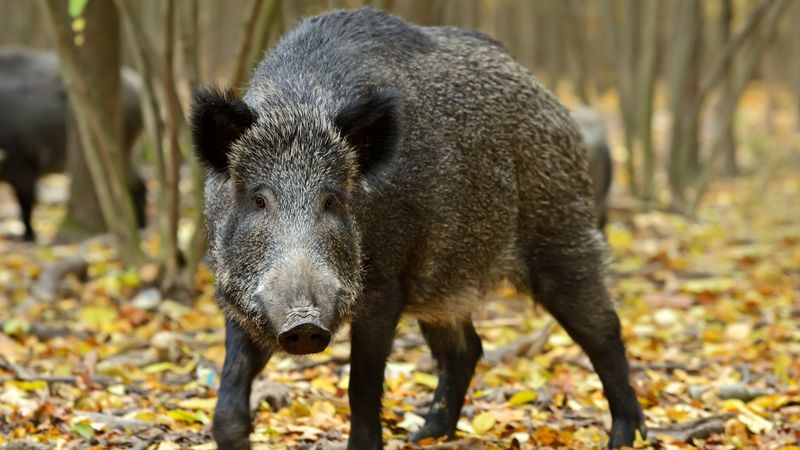
Armored with tough hide and equipped with razor-sharp tusks, these non-native invaders bulldoze through Ozark understory. Descendants of escaped domestic pigs and European wild boars, they’ve become an ecological nightmare.
Wild boars uproot native plants, destroy ground-nesting bird habitat, and compete with native wildlife for resources.
A single sounder (group) can transform acres of forest floor overnight with their aggressive rooting behavior. Their remarkable intelligence and high reproductive rate make control efforts extremely challenging.
12. Eastern Box Turtle
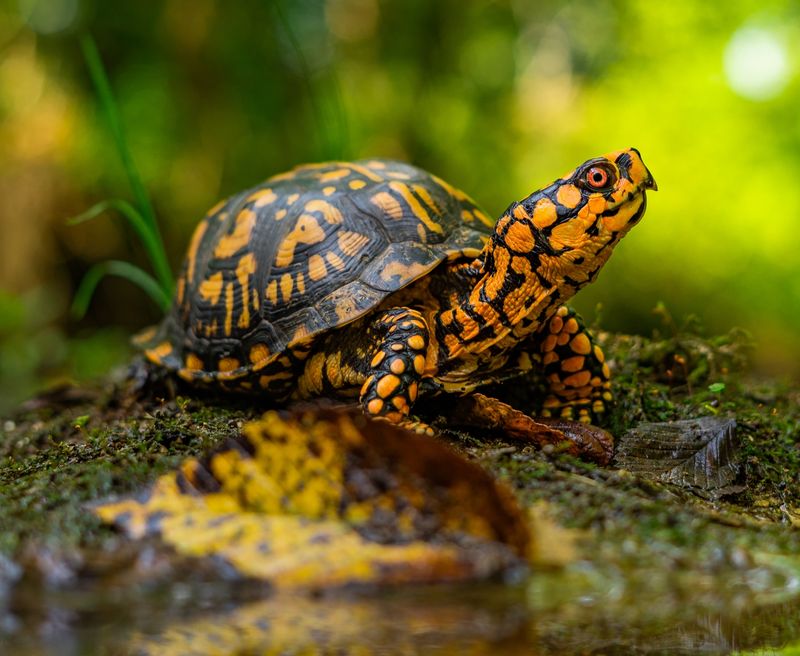
Walking jewels of the forest floor, these colorful reptiles sport uniquely patterned shells that serve as lifetime homes. Each turtle’s markings are as individual as a fingerprint! Eastern box turtles can completely seal themselves inside their hinged shells when threatened.
These slow-moving omnivores may live 100 years while traveling only a few acres throughout their entire lives. Unfortunately, road mortality and habitat fragmentation have led to concerning population declines throughout the Ozarks.
13. Mountain Lion (Cougar)
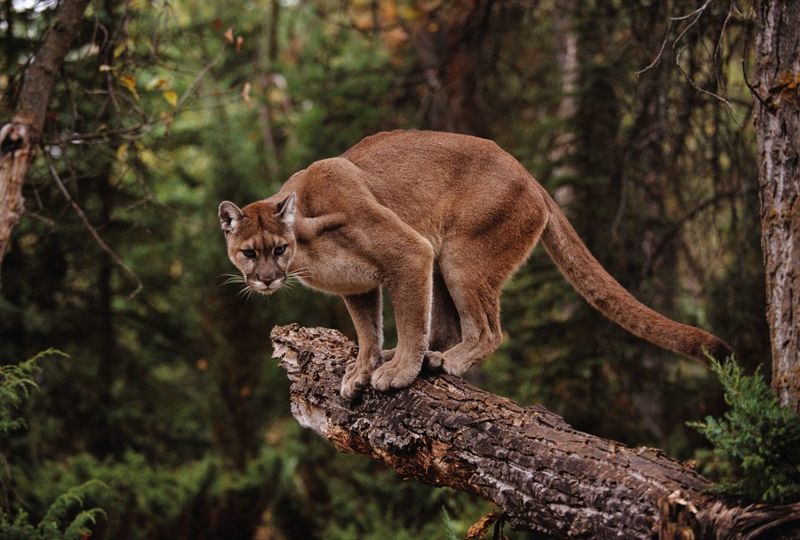
Ghosts of the Ozarks, these magnificent cats leave just enough evidence to fuel endless debates about their presence. Trail cameras occasionally capture tantalizing glimpses of North America’s largest wild cat. Mountain lions require vast territories and primarily hunt deer.
While the Missouri Department of Conservation has confirmed some sightings, debate continues about whether a breeding population exists. These elusive predators symbolize wilderness at its most untamed, stirring both fear and fascination among Ozark residents.
14. Northern Cardinal
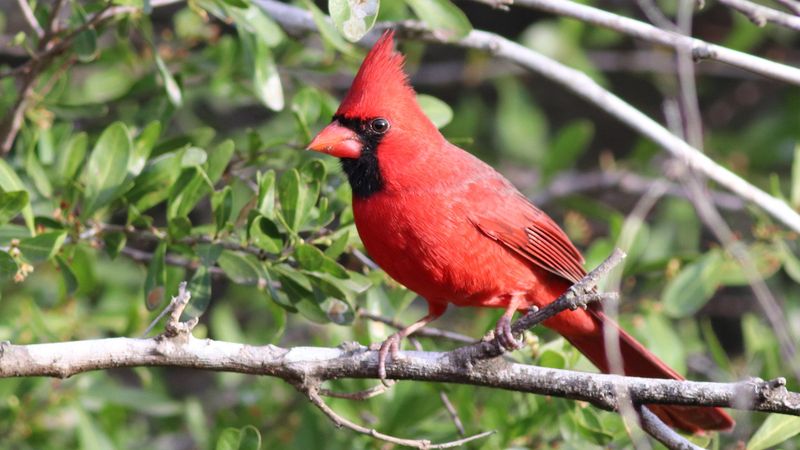
Flashes of brilliant crimson announce the presence of male cardinals against green Ozark foliage. These beloved songbirds remain year-round, bringing color to winter landscapes when most other birds have migrated.
Unlike many songbirds, female cardinals also sing—often while sitting on nests, possibly to communicate with their mates. These distinctive birds form strong pair bonds and defend territories vigorously. Their cheerful whistling songs provide a familiar soundtrack throughout the Ozarks in all seasons.

